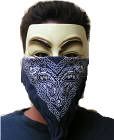Erasure - Light at the End of the World
 Yes, the boys in Erasure are still making music together, and not much has changed since their debut over 20 years ago. Although they’ve had a few sidesteps during the last few years of their prolific career (most notably last year’s acoustic Union Street project), their new CD finds them back in their comfort zone of upbeat synth pop that practically begs for listeners to report to the dance floor and maybe even sing along.
Yes, the boys in Erasure are still making music together, and not much has changed since their debut over 20 years ago. Although they’ve had a few sidesteps during the last few years of their prolific career (most notably last year’s acoustic Union Street project), their new CD finds them back in their comfort zone of upbeat synth pop that practically begs for listeners to report to the dance floor and maybe even sing along.In the interest of disclosure: I haven't listened to an Erasure album since they actually made albums...on vinyl! I dropped out of active Erasure fandom around the time of the release of The Innocents back in 1988, so I was approaching this release purely from a nostalgia angle. I was completely satisfied with what I found, keeping the CD in heavy rotation for weeks instead of my expected one-time cursory spin.
Vince Clarke’s synth sounds really haven’t evolved much through the years, still sounding suspiciously like his earliest Speak and Spell days in Depeche Mode. There’s a strong sense that he’s still using much of the same dated equipment to construct his music, so anyone looking for musical innovation should move along. However, fans of his sound will be instantly at home with these uplifting tracks.
As for Andy Bell, his vocals sound as impressive as ever, although his lyrics sometimes come off as trite and underwhelming. Still, he wrings a good deal of emotion out of his words and contributes enough anthemic proclamations of adoration to keep dance floor denizens completely satisfied.
The new cd will be massively appealing to their hardcore fans and nostalgia junkies looking to reconnect with their childhood heroes. At this point, that’s really all anyone could ask for. They won’t be winning many new fans with this release, but they definitely won’t be losing any either.
Light at the End of the World is now available, check your local retailer for additional information. The CD comes in two versions: a standard version with 10 tracks and a limited edition with an additional two strong tracks, so by all means head for the limited version if at all possible. Erasure is also on tour in North America throughout June as part of the True Colors tour (also featuring Cyndi Lauper and Debbie Harry among others) before beginning their own headlining worldwide tour in July.
Labels: Andy Bell, Erasure, Light at the End of the World, Vince Clarke



.jpg)







